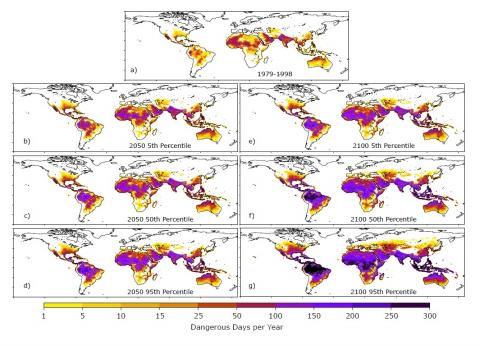Reaction: heat waves move more slowly, which exacerbates their effects
A study has analysed data on heat waves from 1979 to 2020 and concludes that their propagation speed has decreased over the last 40 years due to anthropogenic causes. In addition, their frequency, intensity and travel distance have increased. According to the authors, "longer-lasting and slower-moving heat waves will cause more devastating effects on natural and social systems in the future if [greenhouse gases] continue to increase and effective mitigation measures are not taken". The findings are published in the journal Science Advances.

Ernesto - olas de calor lentas EN
Ernesto Rodríguez Camino
Senior State Meteorologist and president of Spanish Meteorological Association
Although there is no universally accepted definition, heatwaves are characterised by a prolonged period of days with excessive temperatures and devastating effects on human health, the environment, the economy, etc. In fact, the heatwave that hit Europe in 2003 caused huge socio-economic losses and 70,000 deaths in excess of average values. Normally, heat waves have been studied on an ad hoc basis by describing their frequency, intensity and duration. It is known that these three indicators that characterise heat waves tend to increase as a consequence of the general increase in temperatures caused by the anthropogenic climate change in which we are immersed.
The movements of patterns created by pressure fields (e.g. squalls, tropical cyclones, etc.) have often been used to describe the evolution of weather. The movements of fronts and structures associated with precipitation patterns have also been used to describe this evolution. However, heat waves have always been described at fixed points or areas and not by their motion as is done in this work. Of course, this motion is not independent of the motion of pressure patterns.
This study of heat wave motion, which is being carried out globally for the first time, has made it possible to determine that heat waves move more slowly than 40 years ago, as well as increasing their lifetime, frequency and propagation distance. With the help of numerical simulations, it has been possible to attribute the cause of this slower and longer-distance movement of heat waves to anthropogenic climate change. The authors conclude that this slower and more distant movement of heat waves implies more persistent and profound negative effects on ecosystems, human health and socio-economic sectors. In short, these are conclusions already reached through the static study of heat waves, but now realised and corroborated through the study of their displacement.
Luo et al.
- Research article
- Peer reviewed



